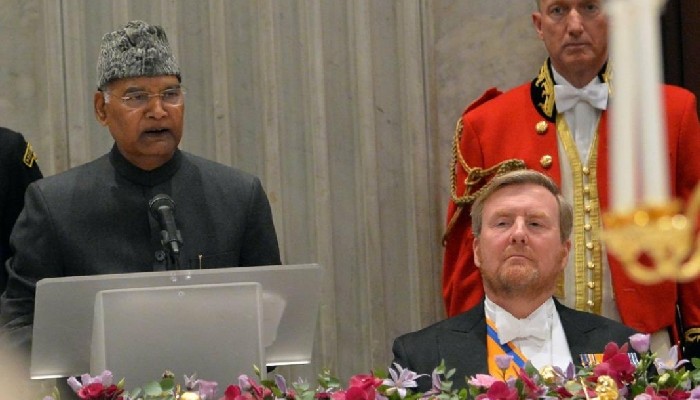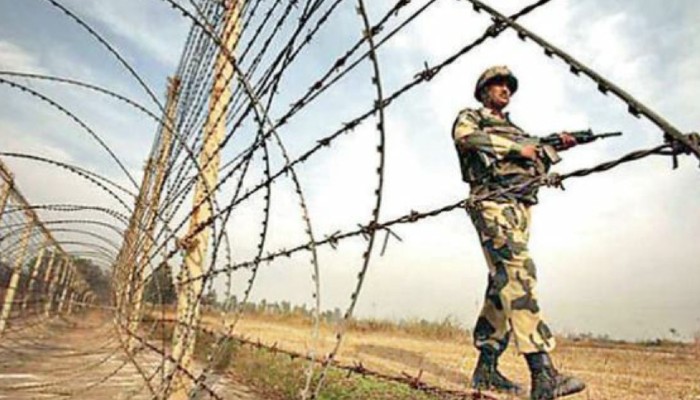The significant project that needs special mention here is the development of historical Mughal Road, which connects Kashmir Valley with border town of Poonch, through Shopian district.
Development projects are at their full potential since two Union Territories have been constituted after the abrogation of article 370 in erstwhile state of Jammu and Kashmir.
The significant project that needs special mention here is the development of historical Mughal Road, which connects Kashmir Valley with border town of Poonch, through Shopian district.
Though conceptualized decades ago in 1950, after being closed for centuries, the 84 km Shopian-Poonch road was to be made operational during 1979 but was opened for light vehicles in 2009 and remain operational only through summers.
As Jammu- Kashmir National Highway, NH 44 is only the crucial road connectivity between two regions of Jammu and Kashmir, National Highways and Infrastructure Development Corporation Limited is working to make Mughal Road an all weather route to reduce traffic on NH 44.
The expertise of a Spanish Consultancy firm, Getinsa Euro Studios that will work in collaboration with Indian Company Rodic Consultants Private Limited has been sought for the construction of a tunnel on Mughal Road that connects Kashmir with the Jammu division. Once completed, the road would be an alternative to Srinagar-Jammu National Highway which often remains closed during winters due to landslides and shooting stones.
The present highway NH 44, cuts across geographically unstable Batote-Ramban-Banihal stretch, which is prone to landslides and avalanches. Mughal Road, on the other hand, passes through a geographically stable terrain and is the shortest link through the Pir Panjal range to the Valley, say geographical experts.
Moreover, the people in Pir Panchal range of Jammu and southern districts of the Kashmir are eager to see the project accomplished, believing it would give a major infrastructure and economic boost in the region.
“The strategic road connectivity has not seen any progress despite repeated assurances by various political governments of the erstwhile state since it did not fit into their main political agenda and development in Jammu region has never been their priority. The construction of the road would mean development and job opportunities for the locals”, stated Ghulam Mohd, a resident of Poonch, studying at Jammu University.
“The construction of the tunnel has been our long pending demand but despite assurances by successive regimes, we have been let down every time. This time we hope the project would be taken up soon and completed in time, "said Muhammad Haroon, a teacher from Poonch.
From Jammu, one will reach Bafliaz via Rajouri covering a total of 177 kilometers and then enter Mughal Road and travel 84 kilometers till Shopian.
Why called Mughal road?
There is an interestingly history behind the nomenclature of the road. Though Mauryan emperor Ashoka in the 3rd century BCE used the Mughal road route to establish Buddhism in Kashmir, however, the road that starts between Rajopuri and Poonch at a point called Bufliaz in the Surankote tehsil of Poonch, was used by Mughal emperors to conquer and travel to Kashmir during the 16th century.
In 1586, Akbar with his army, which included a regiment of 1,500 towering scimitar-tusked armoured elephants, and technologically advanced Turkish cannons, stomped up this road for the conquest of Kashmir. After Akbar, same road was used by Jahangir, Shah Jahan and Aurangzeb to travel to Kashmir.
There are several medieval era structures still prevalent on the road. The most significant is Chingus Serai. It is stated that in November 1627, Jehangir died here en route to Delhi. The wily Noor Jehan embargoed the news of the emperor’s death and had his intestines(chingus in Persian) removed and buried at the serai. He was then embalmed and placed upon his elephant to ride into Delhi creating the illusion that he was still alive.
Then there is the Noori Chamb, a waterfall, where it is said that Noor Jehan used to take bath enroute.
Another legend says that Bufliaz got its name from Alexender’s beloved horse, Bucephalus, who died here from injuries sustained in the battle against Porus, which put an end to Alexander’s dreams of world conquest in June 326 BCE.
A route linking Hirapur (modern Hirpora) in the Kashmir Valley with Rajouri was also in use from ancient times. During the period of the sultans, it was extended to Bhimber. Historian Mohibbul Hasan says it played an important role during this period. Akbar, however, strengthened the route into an "Imperial Road" stretching from Lahore to Kashmir.
Speedy up-gradation of roads sources in Jammu and Kashmir government revealed that the Union Ministry of Road Transport and Highways has been working on war foot to up-gradation of several National Highways in the strategically important Jammu and Kashmir. These include up-gradation of 250 kilometres Leh-Upsi-Sarchu (NH-03), up-gradation of 274 kilometres long NH-244 (Chenani-Khanabal via Kishtwar), Domel-Katra-Reasi-Pouni-Bamla (NH144-A)”, Jammu-Akhnoor-Nowshera-Rajouri-Poonch National Highway, 234 Kargil-Zanskar National Highway.
“All these National Highways would not only activate local economy but also hold great strategic and military importance”, stated a state official.
It is pertinent to mention here that up-gradation of Domel-Katra-Reasi-Pouni-Bamla NH is imperative as lakhs of pilgrims utilize this road to reach the shrines of Shri Mata Vaishnodevi and Shri Shiv Khori in the Reasi district.
Similarly, Jammu-Akhnoor-Nowshera-Rajouri-Poonch National Highway would serve as alternate link to Srinagar via Mughal Road following its widening.
Meanwhile, Union Minister for Road Transport and Highways Nitin Gadkari has recently submitted in the Lok Sabha in response to a written question that Qazigund-Banihal tunnel project on Jammu-Srinagar National Highway will be completed by July 2020 while work on Detailed Project Report (DPR) for two laning of Mughal Road will be completed by January next. He said Mughal Road has been approved “in principle” as a National Highway subject.
Gadkari said work on 4 laning of Jammu-Akhnoor road and 2 laning with paved shoulders of Akhnoor-Poonch on National Highway 144A is in progress while work on Akhnoor-Poonch section is at the stage of DPR. Work on Jammu-Akhnoor road is being executed by NHIDCL and on Akhnoor-Poonch section by the Border Roads Organization (BRO). It will be a total 246 kilometers long Highway. He added that work on 2 laning with paved shoulder of Chenani-Sudhmahadev-Goha road on National Highway-244 is also in progress and is being executed by the NHIDCL. It will be 274 kilometers Highway.
“Construction of two lane road of 265-kilometer Batote-Kishtwar-Sinthanpass-Anantnag on NH-244 is at the DPR stage,” the Highways Minister said, adding work on nine bridges is in progress for 2 laning with paved shoulder of Kargil-Zanskar road on National Highway-301, which will have total length of 234 kilometers and will be constructed by the State Public Works Department.
Among other major projects in the pipeline is the Zojila tunnel, which would connect Sonmarg in Kashmir to Kargil. There is also a project to connect south Kashmir’s Kokernag area to Kishtiwar in Jammu.
Officials said the new projects will make it easier for the public to travel back and forth across Jammu, Kashmir and Ladakh and make trade activities smoother.
 Contact Us
Contact Us  Subscribe Us
Subscribe Us









 Contact Us
Contact Us
 Subscribe
Subscribe
 News Letter
News Letter

